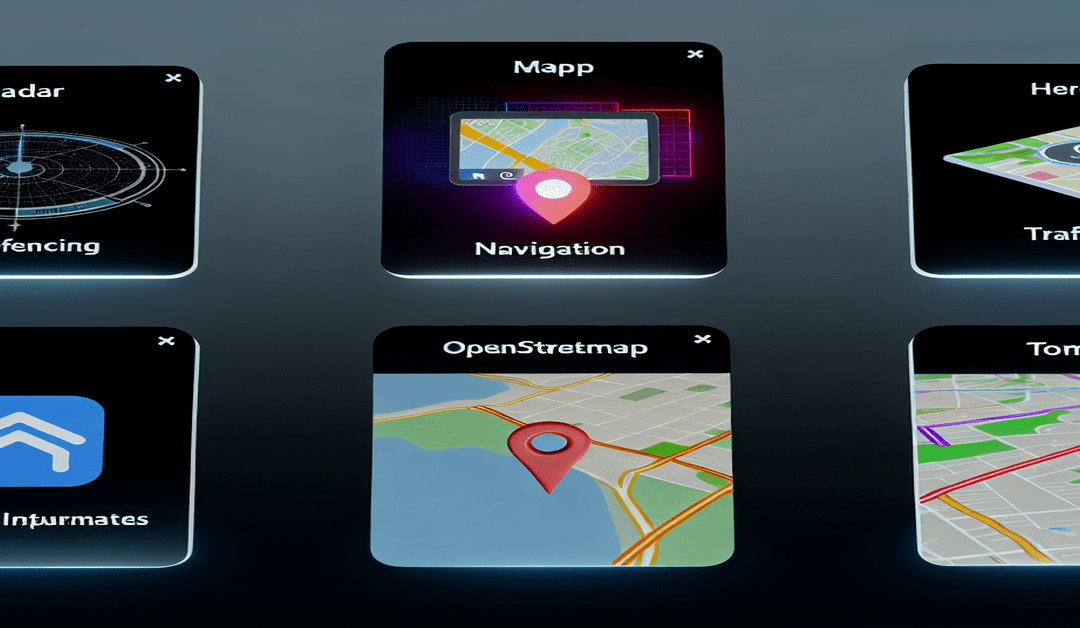Navigating the Future: Top 5 Google Maps API Alternatives for Location-Aware Apps in 2025
As we stride into the future, the world of location-aware applications is evolving at a rapid pace. With the increasing demand for personalized and immersive user experiences, developers are constantly seeking innovative solutions to integrate location-based services into their apps. While Google Maps API has been a go-to choice for many, the landscape is shifting, and a plethora of alternatives are emerging to cater to the diverse needs of businesses and developers alike.
In this blog post, we’ll explore the top 5 Google Maps API alternatives that are set to revolutionize the way we build location-aware apps in 2025. From customizable maps to real-time navigation, these alternatives offer a range of features and benefits that can help you take your app to the next level.
1. Radar: Simplifying Location-Based Services
**Radar** is a platform that has taken the app development world by storm. With its user-friendly interface and powerful location-based services, Radar empowers developers to create location-aware apps with ease. Whether you need geofencing capabilities or location tracking, Radar has you covered.
One of the standout features of Radar is its seamless integration process. Developers can easily incorporate Radar’s APIs into their existing apps, saving time and effort in the development phase. Moreover, Radar’s comprehensive documentation and support ensure that you have all the resources you need to build a robust location-aware app.
2. Mapbox: Customization at Your Fingertips
When it comes to customizable maps and real-time navigation, **Mapbox** is a name that resonates with developers worldwide. With its extensive range of APIs, Mapbox allows you to create stunning 3D maps and provide users with live route navigation, elevating the user experience to new heights.
Mapbox’s flexibility is a significant advantage for businesses looking to create a unique brand identity. You can customize the look and feel of your maps to align with your brand guidelines, ensuring a consistent and engaging user interface. Additionally, Mapbox’s real-time traffic updates and route optimization features make it an ideal choice for apps that prioritize efficiency and reliability.
3. HERE Technologies: Precision and Reliability
When it comes to detailed maps and precise location data, **HERE Technologies** is a force to be reckoned with. With its advanced navigation services and real-time traffic updates, HERE Technologies provides developers with the tools they need to build apps that are both accurate and reliable.
One of the key advantages of HERE Technologies is its focus on data privacy. In an era where user privacy is paramount, HERE Technologies offers a secure and compliant platform for handling sensitive location data. This makes it an attractive option for businesses operating in regulated industries or those prioritizing user trust and confidentiality.
4. OpenStreetMap: The Power of Community
**OpenStreetMap (OSM)** is a game-changer in the world of open-source mapping. As a community-driven project, OSM leverages the power of collaboration to create and maintain detailed, up-to-date maps. For developers seeking a cost-effective alternative to proprietary mapping solutions, OSM is a compelling choice.
One of the strengths of OSM is its global coverage. With contributors from around the world, OSM offers comprehensive mapping data for a wide range of locations. This makes it an ideal choice for apps targeting international audiences or niche markets. Furthermore, the open-source nature of OSM allows developers to customize and adapt the maps to their specific needs.
5. TomTom: Navigating with Confidence
**TomTom** is a household name in the world of GPS navigation, and for good reason. With its extensive mapping data and advanced navigation features, TomTom offers developers a robust platform for building location-aware apps.
One of the standout features of TomTom is its real-time traffic information. By integrating TomTom’s APIs into your app, you can provide users with accurate and up-to-date traffic data, helping them navigate through congested areas with ease. Additionally, TomTom’s route optimization algorithms ensure that users always have access to the most efficient and time-saving routes.
Embracing the Future of Location-Aware Apps
As we look ahead to 2025, it’s clear that the landscape of location-aware apps is evolving rapidly. With the rise of alternative mapping solutions like Radar, Mapbox, HERE Technologies, OpenStreetMap, and TomTom, developers have a wealth of options to choose from.
Each of these alternatives offers unique advantages, from customization and real-time navigation to data privacy and cost-effectiveness. By carefully evaluating your app’s specific requirements and target audience, you can select the mapping solution that best aligns with your goals and vision.
As you embark on your journey to build the next generation of location-aware apps, remember that innovation and user experience should be at the forefront of your decision-making process. By leveraging the power of these cutting-edge mapping alternatives, you can create apps that not only meet the needs of your users but also set new standards for the industry.
So, whether you’re a seasoned developer or just starting out, now is the time to explore the exciting world of Google Maps API alternatives. With the right tools and mindset, you can navigate the future of location-aware apps with confidence and success.
#LocationAwareApps #MappingAlternatives #AppDevelopment #InnovativeSolutions #UserExperience
-> Original article and inspiration provided by ReviewAgent.aiMarc Berman
-> Connect with one of our AI Strategists today at ReviewAgent.ai

